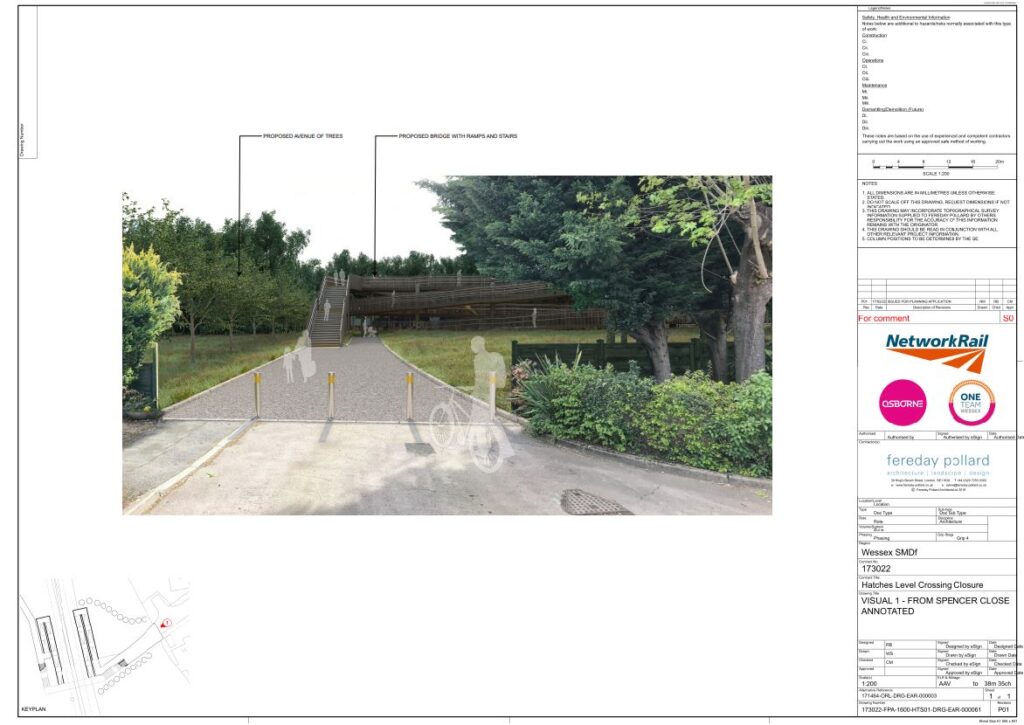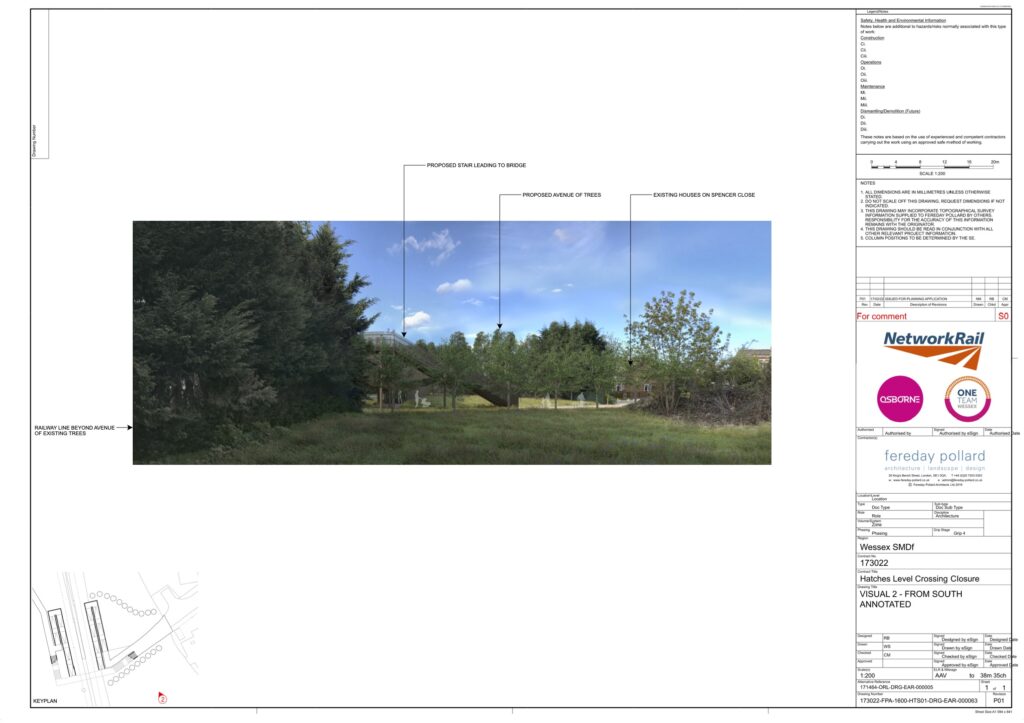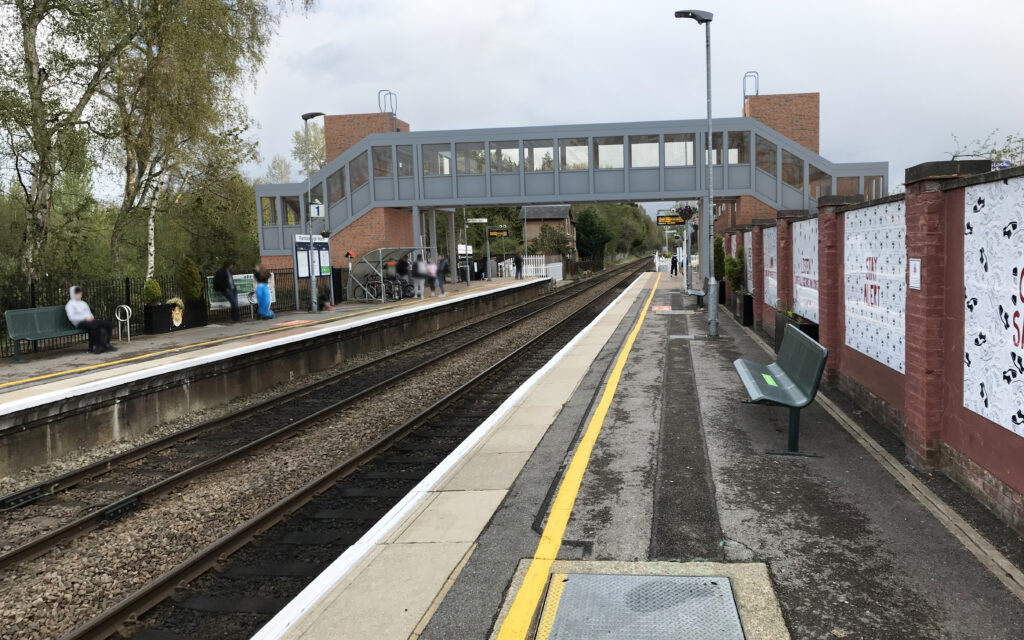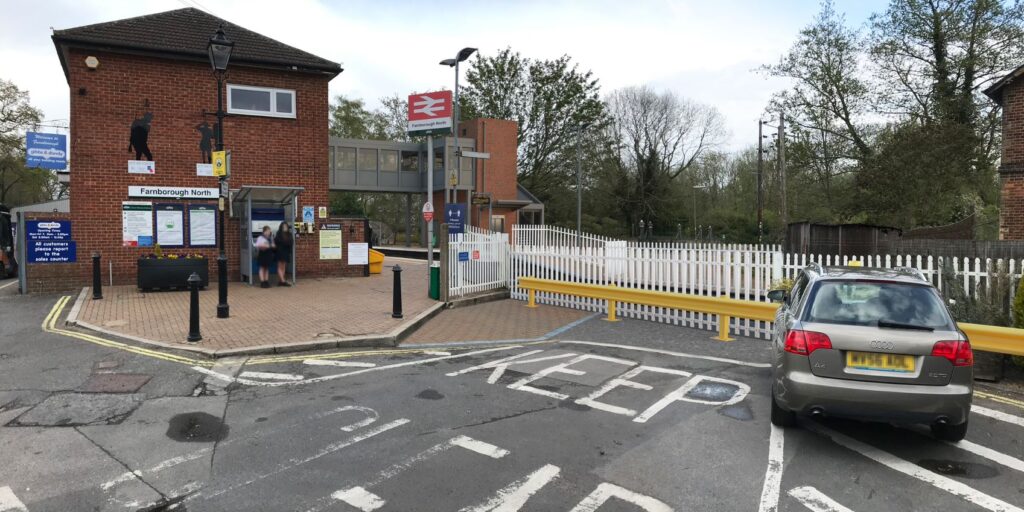Update 9 September 2022:
Network Rail have advised that the site meeting planned for Spencer Close next Wednesday 14th September has been postponed during the period of mourning following the death of HM Queen Elizabeth II.
Update 29 June 2022:
I had a further discussion with Sam Pead from Network Rail 29th June, the summary of which is:
- The Benefit Cost Ratio is the benefit of the reduction in the risk of fatalities over 60 years, using the Value of Preventing a Fatality (VPF) figure of £2.1m per fatality, divided by the cost of reducing the risk.
- Taking the replacement with a bridge as an example, the starting figures are:
- Benefit = reduction in risk = 0.0239 fatalities per year. Over 60 years, and a VPF of £2.1m/fatality, this equates to 60 x 0.0239 x £2.1m = £3m. A bridge is assumed to have a life of 60 years; Miniature Stop Lights (MSL) would be considered to have a life of 25 years; this also affects the Benefit Cost Ratio of MSL.
- Cost = £2.4m
- One reason the Benefit:Cost Ratio is not as simple as £3m/£2.4m = 1.25 (The model calculates the Benefit:Cost Ratio of the bridge at 0.43) is because it is calculated it over 60 years, with the costs discounted by 3.5% pa and the benefits discounted by 1.5% pa. ‘Discounted’ means calculating the present value of any future benefits or costs.
- The model also incorporates other factors including financing costs. Sam showed me (on screen) the model, which looked reasonable, thorough, and prudent on the cost side.
- The Risk Assessment is not complete yet, there is further work to do to assess the Gross Disproportion Factor; if this methodology finds there are risks above a certain threshold then the Benefit Cost Ratio will be factored upwards by the relevant ‘Gross Disproportion Factor’.
There are still other outstanding questions from other residents. One of these is have the inherent risks of creating a bridge been factored into the risk assessment, e.g. the risk of injury from falling whilst ascending or descending a bridge.
Update 23 June
I have received an update from Network Rail on the Risk Assessment, together with an apology for the delay.
My outstanding question was:
“It would still be helpful to have more details on the risk assessment so that residents can fully understand the numbers. If there are established methodologies please share the details. I appreciate you don’t want to overload people with technical detail, but some people will want to understand the trade-off between risk & cost.
There is a specific unanswered question of why an additional risk reduction of 40% is worth spending an additional £1.56m (£2.4m – £840K), i.e. the difference between MSL LX and bridge.
I’m sure if you can share the FWI calculations that will be answered. I believe there is a figure built into the methodology somewhere of £2m per fatality; it would be useful to understand how this fits in.”
The response is:
“Regarding the risk assessment, RSSB in partnership with Network Rail have developed the All Level Crossing Risk Model (ALCRM), which is responsible for managing level crossings on UK rail infrastructure. The ALCRM is a web-based risk tool used by Network Rail, to support it in managing the risk to crossing users, passengers and rail staff by assessing the risks at each crossing and targeting those crossings with the highest risk for remedial measures. The ALCRM is being used by Network Rail to assess the risk at their crossings and is a key part of its level crossing strategy. The model has been used to facilitate a technical audit by the Office of Rail Regulation, and is regularly updated to reflect minor changes.
The ALCRM brings three distinct advantages to the rail industry:
- it supports the on-going collection and collation of site data to ensure that level crossings are actively and correctly managed
- it allows the industry, for the first time, to compare the risk at completely different types of crossings in a consistent way so that resources are used to best advantage
- it underpins the formulation and review of the industry’s level crossing strategy.
ALCRM is fed by information gathered by the Level Crossing Manager as part of their risk assessment of the crossing. On the visit to site various details are collected such as measurements of sighting and the traverse distance. These allow a calculation of the actual sighting time which can then be compared to the required sighting. Other evidence gathered includes photographs, census information and the overall condition of the asset. Census information is a key input and can often take the form of a 9-day survey via a camera. Other information entered into the model includes train speed, number of trains, user types, environmental issues such as location of the crossing in relation to residences, lighting, weather, and various other factors. This then allows ALCRM to determine a risk score, displayed in an alpha-numeric way but also in a numerical score based on Fatality Weighed Injuries. The Alpha-numeric score is explained thus:
- Risk per traverse (identified by a letter A (high) to M (low)), which replaces the previous measure of the risk of death for an individual using the crossing on a frequent basis (500 times per year) by now defining the FWI for a single traverse. It is also measured on a scale of A to M; and
- Collective risk (identified by a number 1(high) to 13 (low)), which relates to the total risk generated by the crossing. This takes into account the overall risk of death and injury for crossing users, train crew and passengers.
The score at the Hatches is C2, placing it in the high category for the risk of traverse to the individual, and high again for the collective risk.
The detail of the values given to all the factors that add into the FWI can be gleaned from the Rail Safety and Standards Board’s (RSSB) Safety Risk Model (SRM). The SRM details a risk component for every aspect of risk on the railway and allows these to be compared across the industry. RSSB are the owners of the SRM and the model is updated every year or two to stay in line with risk trends. At the Hatches, the FWI score is 0.023907399. This places it in the top ten out of the 299 level crossings on the Route.
The FWI score allows all the level crossings, despite their types, to be ranked in order of risk. Rather than associating any particular score to parts of the risk score, what the ALCRM does is provide a list of the main risk drivers. At the Hatches the risk drivers are:
- Does not stop look listen (30%)
- Railway cause: insufficient sighting (24%)
- Distracted / forced by dog (loss of control) (15%)
- Second train coming (10%)
- Tries to cross in front of train (9%)
- Slips, trips, falls or snagged on crossing (8%)
- Unaware of crossing (4%)
In essence, the risk model and its risk score, based on the risk assessment, categorise the Hatches level crossing as a high risk location. The Level Crossing Manager then applies their personal knowledge and training to the location and produces a qualitative assessment to support the quantitative ALCRM assessment. They evaluate the output, check the event history of the crossing, and then suggest ways to reduce the risk based on the cost benefit argument, i.e. there has to be a sufficient reduction in risk to match the cost of the mitigation. As inferred in your email, the safety benefit is based on the current cost of a life which currently is £2,100,000.
The table below explains the two options and the change in risk scores:
|
Option |
Term | ALCRM FWI after | New ALCRM risk score | Safety Benefit | Cost |
Benefit Cost Ratio |
|
Closure by diversion via an EA Bridge |
Long |
0 | M13 | 0.0239 | £2.4m | 0.43 |
|
MSL (integrated) |
Long |
0.0108 | D2 | 0.0131 | £840,000 |
0.38 |
Both cases fail the safety cost benefit test. In order to provide a business case, then the Benefit Cost Ratio should be greater than 0.5 to place it into the ‘not grossly disproportionate’ category.
However, the narrative risk assessment recognises that both the available mitigations were not satisfying the business case but there were mitigating circumstances, including but not solely, the high risk score but also the amount of continued misuse.
Something has to be done in order to satisfy Network Rail’s requirement to lower the risk at this location to one that is tolerable, both legally and societally. With the MSL there is still a considerable risk left (the details of which I can provide but will leave out for succinctness here).
There is an opportunity to provide a stronger business case for the bridge which eliminates the risk and still provides an acceptable alternative. It would not be feasible to expect Network Rail to trial the MSL and then build a bridge. The opportunity presents itself now and is unlikely to return. This is why I am supporting the bridge option as my first choice.
I hope that this helps answer some of your initial questions and help to provide you with some of the rationale behind the decision-making process.
Of course, more questions will arise and I look forward to hearing from you. “
Update 10 June 2022: Still awaiting further details from Network Rail, near miss at Farnborough North level crossing
Thanks to Graham O’Connell for drawing attention to the near-miss that occurred at Farnborough North level crossing 19 May, where it seems there was a failure of the system that is intended to activate the Minature Stop Lights.
The reports suggest that the Miniature Stop Lights were not activated red so there was no indication to pedestrians that they should not cross. It also suggests that the magnetic gate locks were not activated by the attendant because the stop lights didn’t turn red.
Here is the Office of Road and Rail government investigation details: https://www.gov.uk/government/news/near-miss-at-farnborough-north-footpath-level-crossing
Coverage by local media: https://www.itv.com/news/meridian/2022-06-08/investigation-after-near-miss-at-level-crossing
Update 25 May 2022: Presentation slides added
Update 6 May 2022:
 There was another Network Rail Meeting last night at Frimley Green Club, well attended by 40-50 residents.
There was another Network Rail Meeting last night at Frimley Green Club, well attended by 40-50 residents.
The following information has been obtained by residents via Freedom of Information Request:
- Freedom of Information Request Response
- Preliminary Ecological Appraisal
- Ecological Scoping Assessment – Spencer Close
- Ecological Scoping Assessment – Blackwater River Bridge
- Ecological Scoping Assessment – Farnborough North
- Ecological Scoping Assessment – The Hatches
In advance of the meeting, I received some responses from Network Rail to the questions I submitted previously. I have reproduced the answers in red below. I will add further responses as and when I receive them.
One question I believe residents would like more detail on is why an additional risk reduction of 40% is worth spending an additional £1.56m (£2.4m – £840K), i.e. the difference between Miniature Traffic Lights Level Crossing and Bridge. I have asked Network Rail to share the details of the risk assessments.
- How is acceptable risk threshold determined, specifically how is the judgement reached that a Miniature Stop Lights LX would not reduce the risk sufficiently, whilst closure of the LX would?The risk is determined on a numeric value, the Fatality Weighted Injury, which is a standard safety measure across a variety of different industries. From carrying out an assessment, we then enter the details into our risk model which then gives us a score. These are then placed in a hierarchy, note that the Hatches level crossing currently sits 5th out of a total of 300 which relates to its high risk status.The selection of options is based on what would provide the best risk reduction for the cost of the mitigation. The cost for a Miniature Stop Light system would be in excess of £800,000. This is due to the level of checks that have to be built into the system and reflects the complexity of the network where two lines pass into one. The change in the risk score is approximately a 60% reduction numerically. However, a closure option is always preferable if it is feasible as it eliminates the risk. The remaining MSL system is only partly effective, and evidence has shown that although safety is improved, users will still ignore the lights and endanger themselves.
- What are the relative risks of the various options and how are they factored into the Network Rail decision-making process?:
- No change – the level crossing is left with an uncontrolled risk that does not allow network rail to discharge its duty to protect members of the public.
- Miniature Stop Lights – the risk reduces by circa 60% but still leaves the crossing open to misuse, both accidental and deliberate.
- Elimination of LX – the risk is removed completely.
- What are the relative costs of the various options for The Hatches/Spencer Close (including ongoing maintenance costs)?:
- Bridge as proposed The construction of a bridge is currently estimated in the region of £2.4 million total project costs. It represents one of the four bridging schemes on the Route that we are funding within the five-year funding period.
- Bridge as per Farnborough North, i.e. with lifts instead of ramps [it was suggested that difficulty of electricity supply might be a factor in terms of feasibility, but please can we address both cost and feasibility] The bridge at Farnborough North is a larger scheme and currently has an estimated cost of £6.7 million total project costs. These two sites represent roughly half of the five-year budget and are being delivered together to make efficiencies. They both represent important risk reduction locations.
- Miniature Stop Lights This would cost in the region of £800,000
The maintenance costs for each of the assets are similar for the two bridges, in that they will have a limited amount of maintenance as they are new, and just have regular inspection visits, whereas the MSL will likely have a more ‘bathtub’ effect bedding in with failures at the start and end of its lifespan and so would have an extra estimated £2,000 maintenance cost per year for 20 years.
- What assessments have been made of the impact of the proposed solution on:
- Ecology
- Noise (e.g. from fishermen moving their trolleys across the bridge)
- Risk of vandalism from new bridge
- Will the proposed solution pathway from west side of bridge to Hatches pathway be fenced on either side, i.e. to protect against railway hazard to east and water hazard to west? There is currently a railway fence inbetween the proposed new pathway and the railway and will be fenced off from the west (Fisheries). It is also a heavily build up area with Trees surrounding the pathway.
- Will the proposed solution be lit (bridge and pathway to Hatches pathway)? The pathway will be lit with low level lighting to avoid light dwelling.
- What is the current & proposed legal position re. horse use of the right of way? The current legal position of the level crossing is a bridleway with a Temporary Traffic Order in place prohibiting equestrian use. This was agreed with Surrey CC and a local committee in June 2014 when the crossing telephones were removed and the signage adjusted to reflect no use of equestrians at the time and for several years previously.
Many people, including myself and Surrey County Councillor Paul Deach, attended the consultation event run by Network Rail on 5th April.
The widely rumoured proposal to replace the current level crossing (LX) at The Hatches with a bridge at the end of Spencer Close was confirmed.
For those who couldn’t attend the consultation event 5th April, here are copies of the presentations:
Final Farnborough North and Hatches Consultation Presentation 1
Final Farnborough North and Hatches Consultation Presentation 2. pptx
Many attendees at the event had concerns and questions about the proposals and the rationale for them. There were also concerns raised about the communications to date, and the consultation evet itself.
The night of the event I sent feedback and a number of questions to Network Rail, including:
- How is acceptable risk threshold determined, specifically how is the judgement reached that a Miniature Stop Lights LX would not reduce the risk sufficiently, whilst closure of the LX would?
- What are the relative risks of the various options and how are they factored into the Network Rail decision-making process?:
- No change
- Miniature Stop Lights
- Elimination of LX
- What are the relative costs of the various options for The Hatches/Spencer Close (including ongoing maintenance costs)?:
- Bridge as proposed
- Bridge as per Farnborough North, i.e. with lifts instead of ramps [it was suggested that difficulty of electricity supply might be a factor in terms of feasibility, but please can we address both cost and feasibility]
- Miniature Stop Lights
- What assessments have been made of the impact of the proposed solution on:
- Ecology
- Noise (e.g. from fishermen moving their trolleys across the bridge)
- Risk of vandalism from new bridge
- Will the proposed solution pathway from west side of bridge to Hatches pathway be fenced on either side, i.e. to protect against railway hazard to east and water hazard to west?
- Will the proposed solution be lit (bridge and pathway to Hatches pathway)?
- What is the current & proposed legal position re. horse use of the right of way?
Please do feed any more questions, concerns or questions to me at stuart@stuartblack.uk, stuart.black@surreyheath.gov.uk, or via this page.
Some of the graphics used are below:
Original Post 30 March 2022:
Network Rail have announced plans to eliminate two local Level crossings that many of our residents use every day.
More than 350 people use the crossing at The Hatches in Frimley Green every day, and most of these also use the crossing at Farnborough North.
Network Rail are proposing step-free footbridges to eliminate the level crossings whilst maintaining the public footpath through the Hatches.
One reason they are making this proposal is because level crossings are inherently dangerous. Level crossing risk is assessed on two scales:
- The risk to individual users, on a scale from A (highest risk) to M (lowest risk).
- The collective, overall risk of any incident occuring, on a scale of 1 (highest risk) to 13 (lowest risk).
The crossing at the Hatches is assessed as C (Very High) 3 (Very High), and is judged the 11th highest risk crossing of its type on this part of the network.
The crossing at Farnborough North, which has Miniature Stop Lights is assessed as F(Moderate) 4 (High) and is judged the 6th highest risk crossing of its type on this part of the network.
Replacing these level-crossings with bridges will reduce these risks to M13, or Zero. It would also eliminate the need for horn-blowing between 0600 and 2359 which is a source of significant complaints from residents within hearing distance of the ‘whistle boards’ either side of the Hatches level crossing.
There are understandable concerns about exactly where the footbridge will be sited, and when the detailed plans are published this will become clear.
I believe that whilst disruption to local residents should be considered in assessing the options, the safety of level-crossing users should also be given appropriate weight.
I hope we will find out more and residents can make their views known at the event next Tuesday 5th April, 5pm-7pm at Frimley Community Centre, Balmoral Drive, Frimley GU16 9AR.
Stuart Black, March 2022.





Stay In Touch